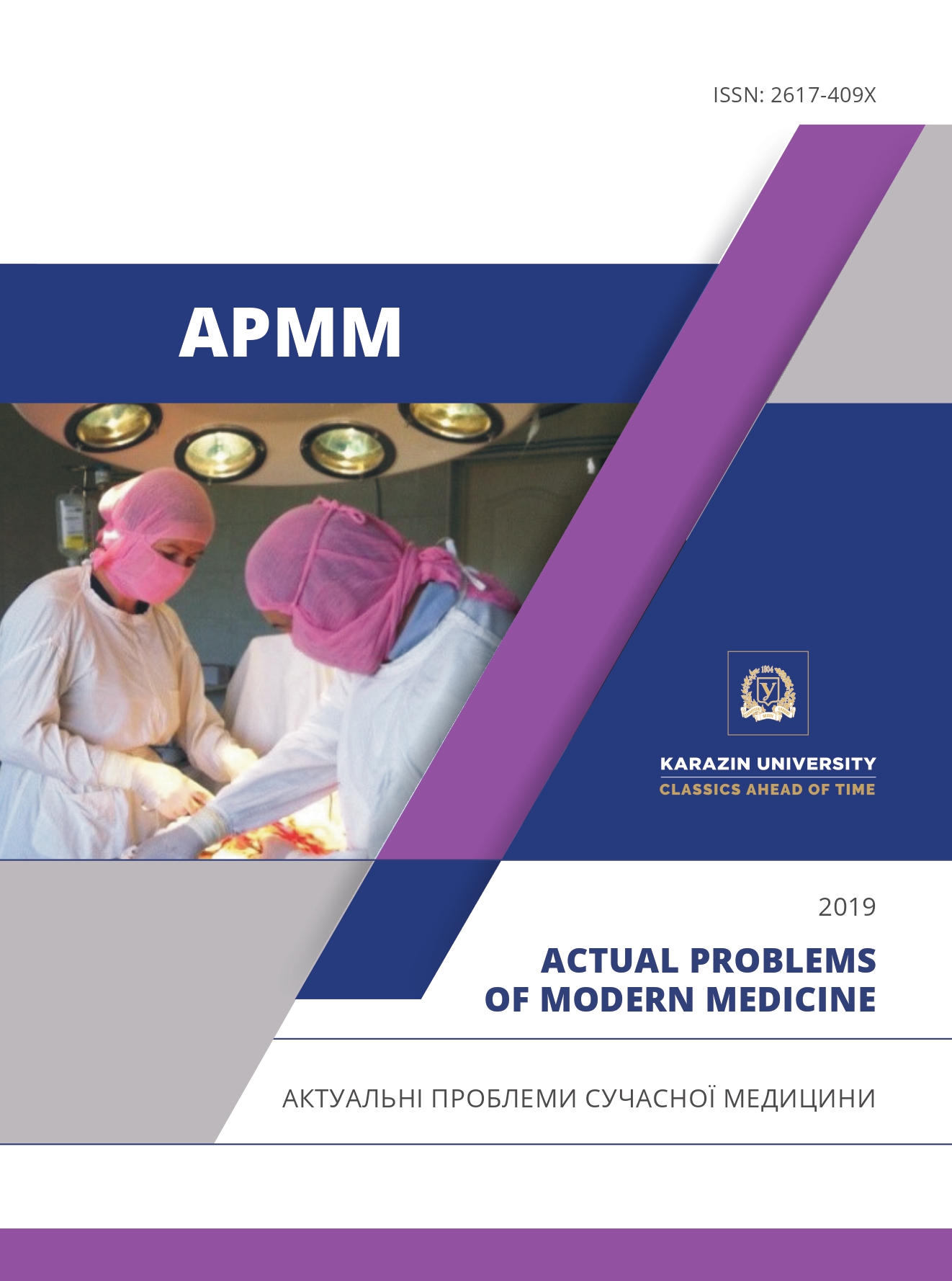Алопластика післяопераційних вентральних гриж живота з використанням наномодифікованої поліпропіленової сітки
Анотація
Мета роботи – покращити результати оперативного лікування післяопераційних вентральних гриж живота (ПВГЖ) шляхом розміщення та фіксацією наномодифікованого сітчастого імплантату ретромускулярно.
Матеріали і методи. Проведено аналіз хірургічного лікування 148 хворих з ПВГЖ. Залежно від виду використаного під час виконання оперативного лікування сітчастого імплантату хворих розділили на дві групи. У 74 (50%) хворих групи I проведено операцію шляхом розміщення та фіксацією наномодифікованого сітчастого імплантату ретромускулярно, в групі II у 74 (50%) хворих застосовано розміщення та фіксацію ретромускулярно класичної поліпропіленової сітки.
Результати та обговорення. Статистично значущо кращі результати отримано у хворих групи I порівнянно з групою II: серому виявлено відповідно у 5 (6,8%) та 24 (32,4%) хворих (р<0,05), нагноєння післяопераційної рани – в 1 (1,4%) і 7 (9,5%) (р<0,05), запальний інфільтрат – в 1 (1,4%) та 9 (12,2%) (р<0,05). Тривалість стаціонарного лікування в групі I становила (7,1±1,1) доби, в групі II – (12,1±2,3) доби. У терміни від 1 до 5 років лігатурні нориці передньої черевної стінки виявлено у 5 (7,7%) хворих групи II (р<0,05), мешому – у 3 (4,6%) (р>0,05). У групі I даних ускладнень не було. Хронічний біль на ділянці черевної стінки на протязі 6 – 8 місяців після операції мав місце 5 (7,7%) хворих групи II та в 1 (1,5%) – групи I (р>0,05), рецидиви грижі – відповідно у 6 (9,2%) і 1 (1,5%) хворих (р<0,05).
Висновки. Оперативне лікування післяопераційних вентральних гриж живота шляхом розміщення та фіксацією ретромускулярно наномодифікованої поліпропіленової сітки є ефективнішим порівняно з використанням класичної поліпропіленової сітки, про що свідчило зменшення частоти сероми з (32,4±1,2) до (6,8±0,5)%, нагноєння післяопераційної рани – з (9,5±0,5) до (1,4±0,2)%, запального інфільтрату – з (12,2±0,6) до (1,4±0,2)%, лігатурних нориць передньої черевної стінки – з (7,7±0,5) до 0%, мешоми – з (4,6±0,3) до 0%, хронічного післяопераційного болю – з (7,7±0,6) до (1,5±0,2)%, рецидиву грижі – з (9,2±0,6) до (1,5±0,2)%.
Завантаження
Посилання
Eriksen JR (2007). Choice of mesh for laparoscopic ventral hernia repair // Hernia. –. – №11. – P.481 – 492 [in Russ]
Heniford B (2000). Laparoscopic ventral hernia repair: a report of 100 consecutive cases // Surg Endosc. – №14. – P.419 – 423 [in Russ]
Israelsson L.A. (2003) Cost analysis of incisional hernia repair by suture or mesh // Hernia – №7. – P114 – 117 [in Russ]
Akopov A.I. (2014) Ultrasonic dissection and coagulation with the nozzle “harmonics focus” in anatomical resections of the lung // Vestn. Surgery im I.I.Grekov. T. 173 №1. – P.76 – 80 [in Russ]
Eliesson MJ (2007). Laparoscopic Parastomal hernia repair // Prevention and treatment. – Springer-Verlag Berlin Heidelberg. – P.233-239




